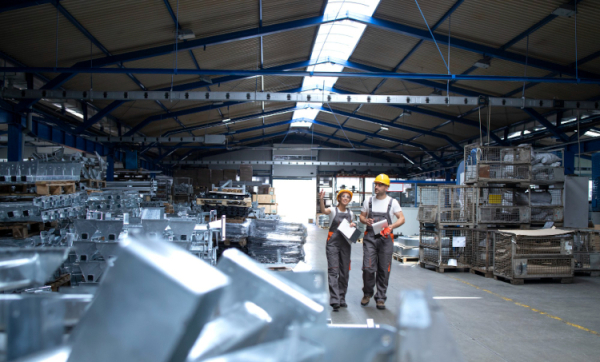Understanding Warehouse Design
Before we dive into the specific principles, it is essential to grasp the fundamentals of warehouse design. An effective warehouse layout should prioritize factors such as space utilization, accessibility, workflow efficiency, and safety. By strategically organizing your warehouse, you can streamline processes, enhance employee productivity, and reduce errors.
Key Warehouse Layout Design Principles
1. Utilize Vertical Space with Mezzanine Floors
One of the most effective ways to optimize your warehouse space is by utilizing vertical space. Implementing mezzanine floors enables you to create additional storage areas without expanding the warehouses physical footprint. By taking advantage of unused vertical space, you can significantly increase storage capacity and accommodate growing inventory.
2. Implement an Intelligent Slotting System
A well-designed slotting system ensures that high-demand products are easily accessible, minimizing travel time and improving order fulfillment speed. Analyzing product velocity, dimensions, and order history allows you to determine the optimal placement of items within the warehouse. By assigning slots based on these factors, you can enhance picking efficiency and reduce labor costs.
3. Optimize Pathways and Aisles
Efficient pathways and aisles play a crucial role in reducing travel time and increasing overall operational efficiency. By designing wider aisles for high-traffic areas and narrower ones for low-traffic zones, you can create a seamless flow throughout the warehouse. Additionally, clearly marked pedestrian and vehicle pathways contribute to a safer working environment and minimize the risk of accidents.
4. Embrace Warehouse Automation
Automation technologies, such as conveyor systems, robotic picking, and automated storage and retrieval systems (AS/RS), have revolutionized warehouse operations. Integrating these advanced solutions into your warehouse layout can significantly improve order accuracy, reduce labor costs, and enhance overall productivity. Embrace automation to gain a competitive edge in the industry by adjusting your warehouse design.
5. Prioritize Safety Measures
A safe warehouse environment is crucial for both employee well-being and regulatory compliance. Incorporate safety measures such as well-maintained equipment, proper lighting, clearly marked exit paths, and regular safety training programs. By prioritizing safety, you not only protect your workforce but also foster a culture of security and professionalism within your organization.
To sum up
Optimizing your warehouse design is crucial for achieving operational excellence and surpassing your competitors. By incorporating the principles discussed in this comprehensive guide, you can create a highly efficient, safe, and productive warehousing environment. Remember to continually evaluate and adapt your layout to accommodate changing business needs and technological advancements.
 Dreaming of owning your own business is often associated with the idea of professional success. However, the reality can be
Dreaming of owning your own business is often associated with the idea of professional success. However, the reality can be As it has been claimed by numerous experts, 3D visualizations have been gaining exceptional popularity in architecture-related branch of industry.
As it has been claimed by numerous experts, 3D visualizations have been gaining exceptional popularity in architecture-related branch of industry. If just ten years ago the mention of augmented reality technology raised a lot of questions, now the situation has
If just ten years ago the mention of augmented reality technology raised a lot of questions, now the situation has When European companies perform operations subject to VAT in a member state of the EU that is not their country
When European companies perform operations subject to VAT in a member state of the EU that is not their country It is a module that can be used to create custom Angular components.
It is a module that can be used to create custom Angular components.  Introduction With a long and rich history dating back to the late 80s and early 90s, windsurfing, kitesurfing, and boardsailing
Introduction With a long and rich history dating back to the late 80s and early 90s, windsurfing, kitesurfing, and boardsailing Draw on The Furniture You can use a nonslip metal ruler or a sharpie for this purpose. You can add
Draw on The Furniture You can use a nonslip metal ruler or a sharpie for this purpose. You can add It is hard to imagine a clothing store in the 21st century which is not able to present its offer
It is hard to imagine a clothing store in the 21st century which is not able to present its offer In highly developed countries, practically every family has at least one car. At times, every adult member of the family
In highly developed countries, practically every family has at least one car. At times, every adult member of the family